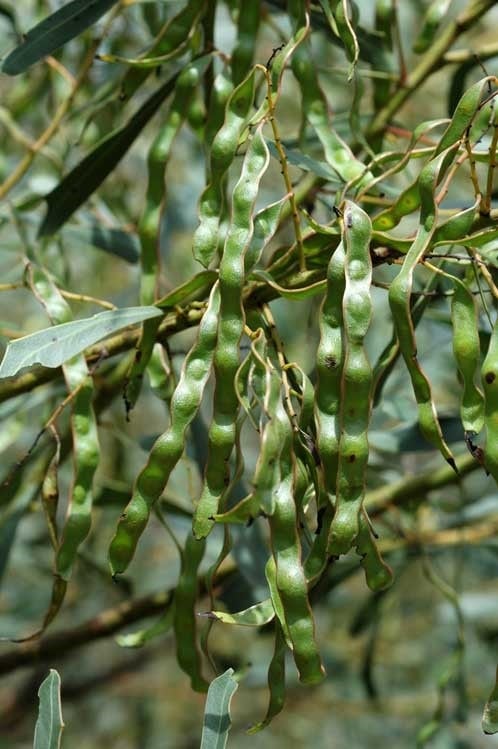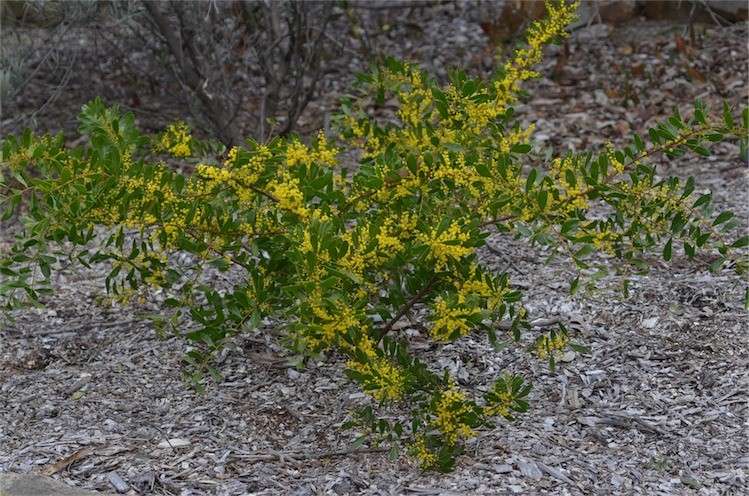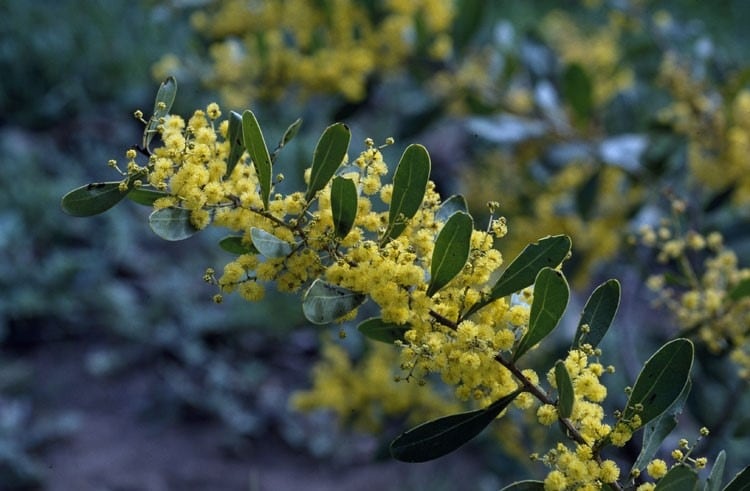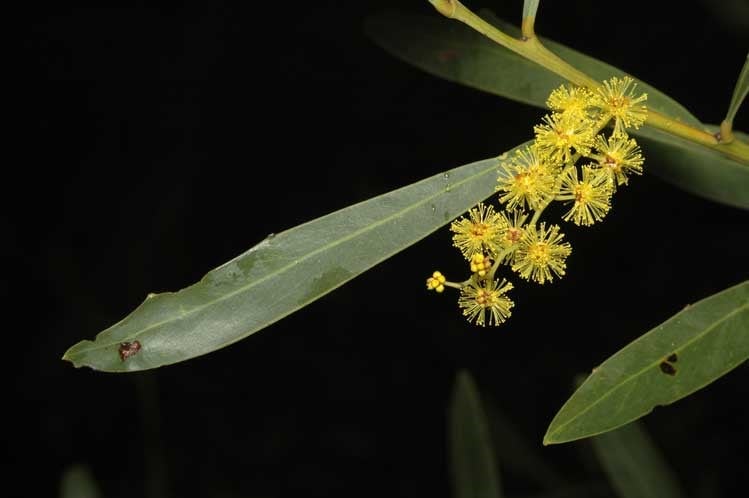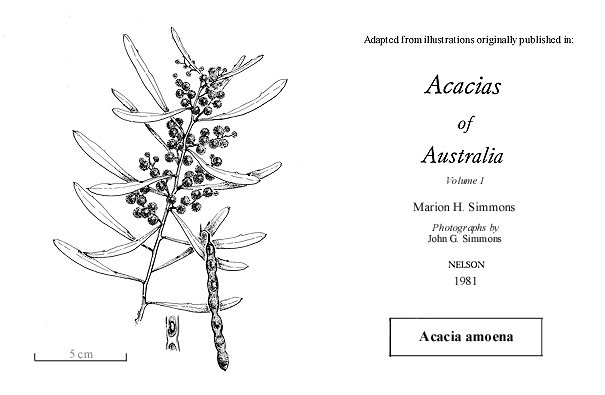Acacia amoena H.L.Wendl.
WATTLE
Acacias of Australia
Common Name
Boomerang Wattle
Family
Fabaceae
Distribution
Discontinuous in the Great Divide from the Apsley R., N.S.W., S to upper reaches of the Snowy R., north-eastern Vic. Records of this species from Qld are erroneous, being based on a misidentification of A. myrtifolia, fide L.Pedley, Austrobaileya 1: 258 (1980).
Description
Shapely shrub 1–4 m high. Branchlets red-brown, glabrous. Phyllodes on raised stem-projections, mostly inclined to ascending, mostly oblanceolate, (2–) 3–7.5 (–8.5) cm long, 5–12 (–17) mm wide, obtuse or acute, mucronulate, glabrous, with prominent and slightly excentric midrib, indistinctly penninerved; glands normally exserted, 2–4, the lowermost (5–) 10–20 (–25) mm above pulvinus with margin often shallowly indented at the gland. Inflorescences 6–21-headed racemes; raceme axes 1–6.5 cm long, glabrous; peduncles (1–) 2–4 (–6) mm long, slender, glabrous; heads globular, 6–12-flowered, bright yellow or sometimes pale yellow; bracteoles dark brown, evident in buds. Flowers 5-merous; sepals free to c. 1/2-united. Pods linear, shallowly constricted between seeds, to 9 cm long, 4–6.5 mm wide, firmly chartaceous, dark brown to black, glabrous. Seeds longitudinal, oblong to elliptic or ovate, 3.5–5 mm long, slightly shiny, black; funicle encircling seed in a single or sometimes double fold, pale red-brown; aril clavate.
Habitat
Grows in tableland areas of moderate elevation, on rocky slopes and along watercourses, in low open forest.
Specimens
N.S.W.: Apsley Falls, c. 19.2 km E of Walcha, R.Coveny 2290 (NSW, PERTH); 18 km NE of Taralga, Wombeyan Caves, C.Tyrrel 101 & H.Streimann (CANB). Vic.: Snowy R., 1 km downstream of Gattamurh ford, H.van Rees 042 (MEL).
Notes
A member of the ‘Acacia microbotrya group’ closely related to A. kydrensis. It is similar to A. chalkeri, with which it is sometimes sympatric, and to small phyllode forms of A. rubida, but distinguished by its phyllodes with 2–4 prominent glands. Some forms of A. semirigida (Qld) have similar phyllodes and glands but are distinguished especially by their paler coloured, more numerous flowered heads, broader pods, and seeds with short funicles. May also superficially resemble the more northerly distributed A. buxifolia subsp. pubiflora.
FOA Reference
Data derived from Flora of Australia Volumes 11A (2001), 11B (2001) and 12 (1998), products of ABRS, ©Commonwealth of Australia
Author
B.R.Maslin
Minor edits by B.R.Maslin & J.Rogers
This identification key and fact sheets are available as a mobile application:
URL: https://apps.lucidcentral.org/wattle/
© Copyright 2018. All rights reserved.
